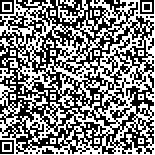下载中心
优秀审稿专家
优秀论文
相关链接
摘要

通过海上试验测量船舶含气泡尾迹海水表观光学特性及物理特征,定量分析在二类水体中尾迹气泡对海水表观光学特性(例如归一化离水辐亮度、遥感反射率)的影响.通过比较含气泡尾迹海水遥感反射率与ASTER可见光、近红外波段辐射计辐射分辨率,证明了卫星光学遥感船舶含气泡尾迹的适用性.这些工作可为利用星载光学传感器遥感的途径获取船舶尾迹信息提供理论依据.试验证明,在可见光和近红外波段,船舶含气泡尾迹不仅在幅度上也在谱形上改变海水表观光学特征,尾迹气泡使得海水变得更绿.同时,随着观测点在尾迹中位置距目标船越近,气泡密度不断增大,反射率也随之增强.但是,由于二类水体中其他悬浮颗粒浓度较高,增强了后向散射,因此气泡所引起的海水表观光学特性的变化没有想像中明显.相比较而言,海水愈混浊,船舶尾迹在海水中引起的水色变化愈不明显.
关键词:
船尾迹 气泡 二类水体 表观光学特性 二类水体 船舶 气泡 尾迹 海水 表观光学特性 测量 分析 Bubbles Ship Wakes AOPs Seawater Analysis Measurement 水色变化 后向散射 颗粒浓度 增强 反射率 密度Shipwake’s properties (e. g. microwave property, thermal infrared property, acoustic property, underwater optical scattering property ofwake bubbles) have been extensively studied to monitor surface ship through the ages.However, therewere few researches on above-water spectral features of ship wake, especially features with submerged bubbles. W ith the increase of the resolution of spaceborne optical sensor, measurement for ship wakes by optical remote sensing is feasible. The physical features and Apparent Optical Properties (AOPs) of ship wakes with bubbles was measured in situ, and how bubbleswould affectAOPs of seawater in Case-Ⅱwaters, such as normalized water-leaving radiance and remote sensing reflectance, were analyzed in quantity. By comparing remote sensing reflectance ofwake seawater containing bubbleswith radiance resolution ofASTER VNIR radiometer, we can find that it is feasible to detect shipwakes containing bubbles by spaceborne optical sensors. In this paper, themain research domestic and abroad was introduced systematically. In accordancewith the phenomenon in expermi ent of optical properties of seawater caused by bubbles, the influence of bubbles in wakes on optical properties caused by varieties ofwater bodies and environment(e. g. solaraltitude angle, wind speed and cloud cover), and quantificationalevaluation of validity ofwakeswith bubbles based on satellite optical sensorwere investigated. Theseworksmay provide some theoretical foundations for capturing the information of shipwakes from spaceborne optical sensors. Observations prove that ship wakeswith bubbles can change AOPs of seawater in both themagnitude or spectral shape over the visible and infraredwave bands, and the colorofwater becomes greenerbecause ofwakes bubbles. And the bubbles’concentration and reflectance increased with the distance from the observation position inwake to the targetship geting shorter. During the expermi ents, we found that the length of target ship wakes with bubbles exceeded 1km, and the width was about 40m. The concentration of bubbles in wakes became higher as the distance between observation point and target ship shortened. Therefore, the reflectance also enhanced. We observed another shipwhose speed equaled to the targetship and tonnagewas2000theavier than the target ship. Althoughwe only took visual observation because of the lmi ited expermi ent condition, we found that the length and\nwidth of itswake with bubbleswere greater than that of target ship; therefore, we believe that the screw propeller can\ngeneratemore bubbles as ship isheavierand faster. And the bubbles inwake are able to lasta longer tmi ewhen the screw propeller is located in deeperwater and the tmi e interval of bubbles rising to surface is longer. The changing ofAOPs caused by thewakewith bubbleswillbemuchmore distinctand lasta longer tmi e. At the same tmi e, inCase-Ⅱwaters,the variations of seawaterAOPs caused by the introduction ofbubbleswere notvery clearly because the high concentration of suspended particlesmay increase the backscattering. In comparison, the variation ofwater color affected by shipwakes weakenedwhenwaterwasmore turbid. Although the information ofwake with bubbles obtained by optical sensor varied withwave bands, the variance of seawater spectrum caused by wake bubbles can be extracted more easily with the mi provementof the radiance and spatial resolution ofmodern optical sensor (the quantification grade of optical sensors carried by QuickBird and IKONOS arrive at11bits, and the spatial resolution is0·6m, 1m respectively).Wind speedwas less than 10m·s-1and the sea conditionwas goodwhenwe took expermi ents. The effectof the roughness of sea surface on expermi entdid notcompletely emerge.In order to fully analyze howmarine environmentaffectsAOPs ofwake seawater with bubbles, more expermi ents are needed in otherwind speed and sea condition. Meanwhile,we need to take more expermi ents tomeasure vessels of different size and speed. We wish to summarize the rules ofAOPs ofwake seawater\ncomparingwith background seawater bymeans of combining satellite remote sensing information with expermi ent data.Finally, wemay achieve our goals ofmonitoring and identifing ships in large-scale sea area by using spaceborne optical\nsensor.

